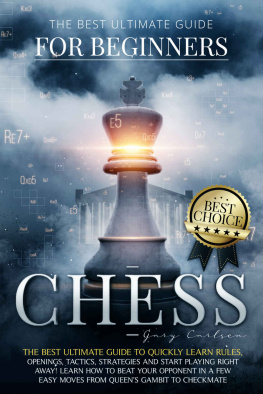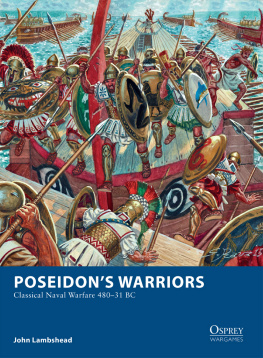
First published in Great Britain in 2015 by Osprey Publishing,
PO Box 883, Oxford, OX1 9PL, UK
PO Box 3985, New York, NY 10185-3985, USA
E-mail:
Osprey Publishing, part of Bloomsbury Publishing Plc
Bloomsbury is a registered trademark of Bloomsbury Publishing Plc
This electronic edition published in 2015 by Bloomsbury Publishing Plc
2015 Keith Flint
All rights reserved
You may not copy, distribute, transmit, reproduce or otherwise make available this publication (or any part of it) in any form, or by any means (including without limitation electronic, digital, optical, mechanical, photocopying, printing, recording or otherwise), without the prior written permission of the publisher. Any person who does any unauthorised act in relation to this publication may be liable to criminal prosecution and civil claims for damages.
A CIP catalogue record for this book is available from the British Library
Keith Flint has asserted his right under the Copyright, Designs and Patents Act, 1988, to be identified as the author of this book.
Print ISBN: 978-1-4728-0809-7
PDF e-book ISBN: 978-1-4728-0810-3
EPUB e-book ISBN: 978-1-4728-0811-0
www.ospreypublishing.com
Osprey Publishing supports the Woodland Trust, the UKs leading woodland conservation charity. Between 2014 and 2018 our donations will be spent on their Centenary Woods project in the UK.
Acknowledgements
Many thanks to Phil Smith at Osprey, and especial thanks to all the playtesters, from those I have known for years to those I have never met. Your contributions have been genuinely invaluable.
Special thanks go to James Roach, Crusader Miniatures
(www.crusaderminiatures.com), Front Rank Figurines (www.frontrank.com) and Nick Eyre (www.northstarfigures.com) for their generosity in providing the photographs found in this volume.
CONTENTS
INTRODUCTION
"On the wargame table each commander will endeavour to manoeuvre the enemy into untenable positions so that they must accept the Honours of War"
Donald Featherstone, Wargames Through The Ages, vol.2, 14201783
"Honours of war (plural noun, military): the honours granted by the victorious to the defeated, esp. as of marching out with all arms and flags flying."
Collins English Dictionary
***
This is a set of wargames rules for fighting battles with toy soldiers in the period of the Seven Years War in Europe, which lasted from 1756 to 1763. They are designed to be simple to understand and straightforward to play: the main mechanics can be comprehended in a single read-through. No cards or special playing aids are required.
The rules can be used for miniatures varying in size from 28mm down to 6mm. As figure size reduces, you have the option to fight battles on progressively smaller tables, using reduced moves and firing ranges; or alternatively you can use smaller figures to fight big battles whilst still using tables of a reasonable size. While I give a basing recommendation, re-basing your collection will not normally be necessary.
Whatever size of figure you choose, a wide range of battles can be fought, from small encounters with four to six units on each side right through to representations of some of the major battles of the period. Four scenarios in a variety of sizes are given towards the back of the rulebook.
You will find things happen quickly a lot can occur in one move! The simple victory conditions that you will use in most battles will give your games a beginning, a middle and an end.
Players should note that the other two significant theatres in this period, North America and India, are not covered. These rules have a tight period focus and cover only the Seven Years War in Europe.
I hope you enjoy playing Honours of War.

(Front Rank Figurines)
THE SEVEN YEARS WAR
There were four main players in the European theatre of this titanic struggle: Prussia on the one hand, opposed by France, Austria and Russia on the other. A variety of more minor participants were also involved. Prussia was aided by Britain and Hanover as well as some of the German states of the Holy Roman Empire, notably Hesse-Kassel. Other German territories sided with the Allied cause, including significant states like Bavaria and Saxony. Sweden also fought on the Allied side.
This period has many attractions for wargamers. The wide variety of colourful uniforms makes collecting miniatures a joy, and miniatures in all scales are widely available. The armies were fundamentally professional and tactics were generally clear-cut, emphasising linear infantry formations to maximise firepower, spirited charges by cavalry, and an increasingly important role for artillery which became a major battlefield killer. Overall, formations and tactics tended to be simpler than in the later Napoleonic period: squares, skirmishers and battalion assault columns were essentially complications of later wars. The major engagements also tended to be smaller, meaning that a number of them can be represented on wargaming tables of (shall we say) domestic size, even in 28mm. The lower level engagements of La Petite Guerre (or Der Kleine Krieg, if you prefer) were also much in evidence, and can form the inspiration for any number of fictional battles of a variety of sizes. There is much more to this period than formal encounters with the armies lined up opposite one another, infantry in the centre and cavalry on the wings.
TROOPS OF THE SEVEN YEARS WAR
INFANTRY
The infantry was the most powerful of the three arms, being able to hold ground on its own and, unless of poor quality or disorganised by losses, able to see off cavalry with musket fire without forming square. Most infantry units were close order line infantry known as musketeers or fusiliers, organised into regiments which had between one and three battalions. Battalions were several hundred men strong, with actual size depending on attrition and national organisation. Battalions are the infantry fighting units in Honours of War.
Close order infantry moved to the battlefield in column, and then formed into line to fight, usually in 3 ranks, to maximise their firing effectiveness.
Grenadiers or guard units formed the elite infantry. Inferior quality infantry were commonly the garrison and militia battalions, or hastily formed low-grade units like the Prussian Freikorps.
Light infantry units were formed by most nations, such as the Austrian Grenz ('border') battalions, Prussian jaeger or the French Volontaires de Flandres. A small minority of such units had rifles. Quality and unit size were variable. They were used for screening, reconnaissance and raids, but did appear in pitched battles as well. They were particularly useful in difficult terrain.

British contingent at Minden, 1759 (LR): Private, 51st (Brudenells) Regt of Foot; Trooper, 6th (Inniskilling) Dragoons; Grenadier, 25th (Edinburgh) Regt of Foot, by Gerry and Sam Embleton Osprey Publishing. Taken from Men-at-Arms 460:

















